SUBFAMILY MYRMICINAE - Genus Terataner
| The Ants of
Africa SUBFAMILY MYRMICINAE - Genus Terataner |
|
| Contents - Myrmicinae - MYRMICINAE Introduction |
In Tribe FORMICOXENINI.
Diagnostic Features - Antennae 12-segmented, with a 3-segmented club. Pronotum anteriorly and promesonotum laterally marginate. Promesonotal suture absent but the lateral margination is broken at the pro-mesonotal margin. Metanotal grove weakly impressed. propodeum unarmed, metapleural lobes present. Petiole with paired dorsal teeth.
Emery's (1912b) genus description is at ![]() .
.
Bolton (1973a) described this as a totally arboreal genus, adding (1981b) that nesting is in rotten parts of standing timber, often some considerable distance above the ground. In his later review four species were described from West and Central African forests (Bolton, 1981b). These he described as forming a single complex, the luteus-complex, separated in two groups on the basis of the postpetiole in dorsal view having a very broad and broadly rounded posterior arch (elegans and luteus), or having a narrow and narrowly rounded posterior arch (piceus and velatus). Carroll (1979) observed genus members in Liberia but did not differentiate the species; all were collected only from hard, dry, dead stems on trees and never from wet wood; burrows were some 3 mm in width.
Key to African species (adapted from Bolton, 1981b):
| 1 | 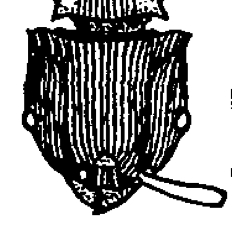 In full face view head
with posterior of frontal carinae angled outwards In full face view head
with posterior of frontal carinae angled outwards |
2 |
| -- | 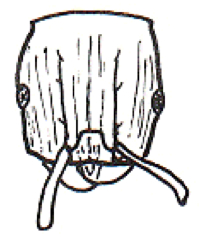 In full face view head
with posterior of frontal carinae fading out in a single line In full face view head
with posterior of frontal carinae fading out in a single line |
3 |
| 2 |  Eyes near flat; posterior of
frontal carinae with a ridge of tubercles; in dorsal view sides of
pronotum strongly convergent posteriorly; dorsal alitrunk with abundant
short whitish hairs; TL 4.8-6.0 mm; colour black Eyes near flat; posterior of
frontal carinae with a ridge of tubercles; in dorsal view sides of
pronotum strongly convergent posteriorly; dorsal alitrunk with abundant
short whitish hairs; TL 4.8-6.0 mm; colour black |
. |
| . |  |
East Africa - bottegoi |
| -- | 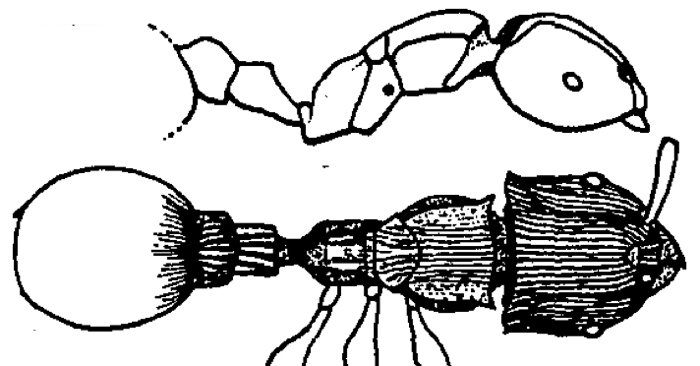 Eyes distinctly convex
and breaking outline of face; sides of pronotum near parallel; few
erect hairs on dorsal alitrunk; TL 6.0 mm; bicolorous, head and gaster
black, alitrunk red Eyes distinctly convex
and breaking outline of face; sides of pronotum near parallel; few
erect hairs on dorsal alitrunk; TL 6.0 mm; bicolorous, head and gaster
black, alitrunk red |
East & Southern Africa - transvaalensis |
| 3 | 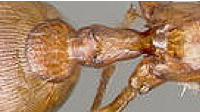 Postpetiole in dorsal
view with the posterior arch very broad and broadly rounded Postpetiole in dorsal
view with the posterior arch very broad and broadly rounded |
4 |
| -- |  Postpetiole in dorsal
view with the posterior arch narrow and narrowly rounded Postpetiole in dorsal
view with the posterior arch narrow and narrowly rounded |
5 |
| 4 | 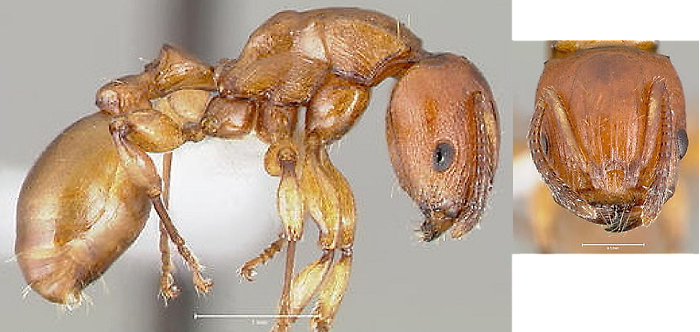 Yellow; TL 5.0-5.8 mm; pronotal
dorsum distinctly broader than long Yellow; TL 5.0-5.8 mm; pronotal
dorsum distinctly broader than long |
West Africa & Congo Basin - luteus |
| -- | 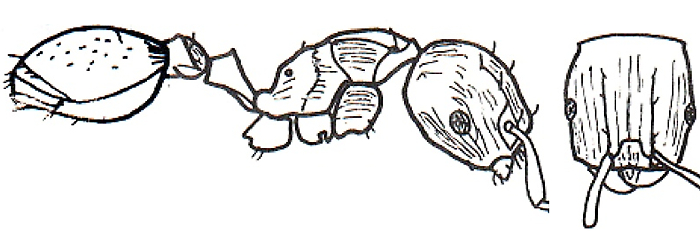 Dark brown to black, alitrunk
usually reddish; TL 4.9-5.6 mm; pronotal dorsum about as long as broad Dark brown to black, alitrunk
usually reddish; TL 4.9-5.6 mm; pronotal dorsum about as long as broad |
. |
| . | 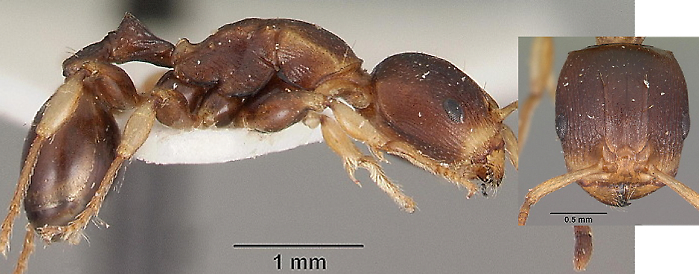 |
West Africa - elegans |
| 5 |  First gastral tergite
without hairs; reticulate-punctate pronotal dorsum without strong
rugulae; TL 4.6-5.5 mm; colour mid- to blackish-brown First gastral tergite
without hairs; reticulate-punctate pronotal dorsum without strong
rugulae; TL 4.6-5.5 mm; colour mid- to blackish-brown |
West Africa & Congo Basin - piceus |
| -- | 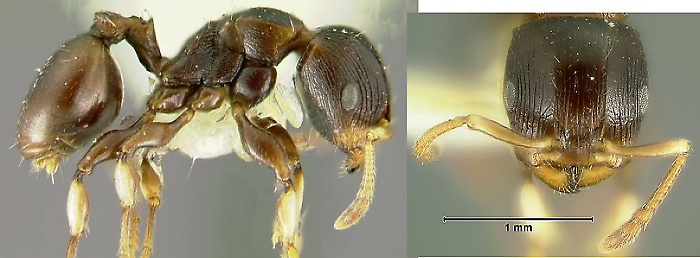 First gastral tergite with
strong hairs on basal half; reticulate-punctate pronotal dorsum with
strong longitudinal rugulae; TL 4.5 mm; colour mid- to blackish- brown First gastral tergite with
strong hairs on basal half; reticulate-punctate pronotal dorsum with
strong longitudinal rugulae; TL 4.5 mm; colour mid- to blackish- brown |
West Africa - velatus |
| MYRMICINAE Introduction |
© 2007, 2012, 2013 - Brian Taylor CBiol FSB FRES 11, Grazingfield, Wilford, Nottingham, NG11 7FN, U.K. |
href="terataner.htm"